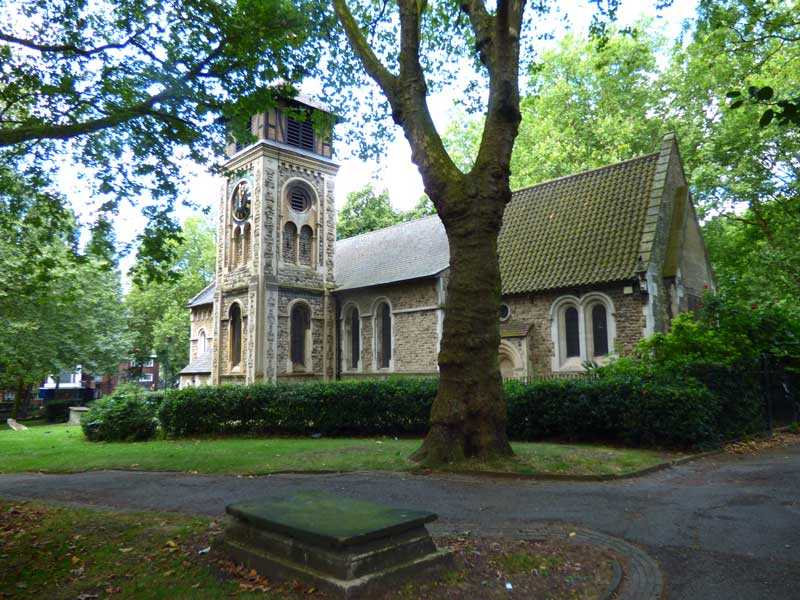
To Rev'rend spire of ancient Pancras view,
To ancient Pancras pay the Rev'rence due,
Christ's sacred Altar there first Britain saw
And gaz'd and worshipp'd with an holy awe,
Whilst pitying Heav'n diffuse'd a saving ray
And heathen darkness changed to Christian day
Anonymous Poem. Gentlemen's Magazine, 1749
St Pancras Old Church really does have the feel of a sleepy country church about it.
In fact, it has more than that.
It has the air of an aged aunt who, having withstood every trial and tribulation that life can throw at her, has now settled into her dowager years to mull over her memories, nonchalantly oblivious to the encroachment of the modern age around her.
Indeed, the "modern age" has been trying to encroach upon the serenity of St Pancras Old Church for centuries.
But each time it has come a courting, this tiny little building has repulsed its advances and has sent it on its way with its cap pulled down over its eyes and its tail stuck firmly between its legs.
And, Amen to its survival!
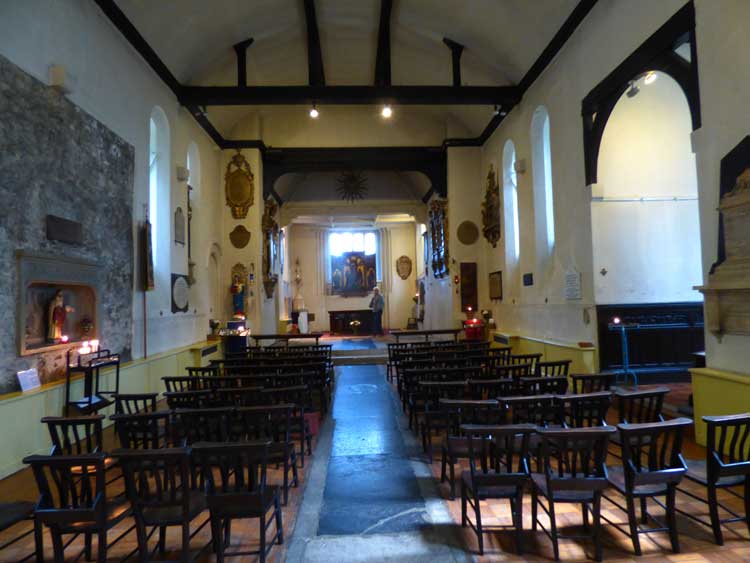
The Interior Of Old St Pancras Church.
When it was that Londoners first knelt in prayer within the time-scarred walls of the church is not known. Suffice it to say it was a very long time ago. The interior contains some fine Norman masonry, peppered with a mix of Roman bricks and tiles. This has led to a belief that St Pancras Old Church is up there amongst the oldest places of worship in London - with some even going so far as to proclaim it the Capital's oldest place of worship, with origins that stretch as far back as AD313.
One of the earliest actual references to the church is around 1170 when Fulcherus is recorded as being appointed its parish priest on a princely stipend of two shillings a year.
There are descriptions of it in the 17th century as being "...in the fields remote from any house in the said parish," a situation that is almost impossible to picture today as you approach it along the roaring Pancras Road outside!
In 1642, during the English Civil War, Oliver Cromwell's Parliamentarians issued instructions that "the deserted church of Pancras" was to be "disposed of unto lodgings for fifty Troupers," and its ancient walls echoed to the raucous banter of the soldiers who took up residence within them
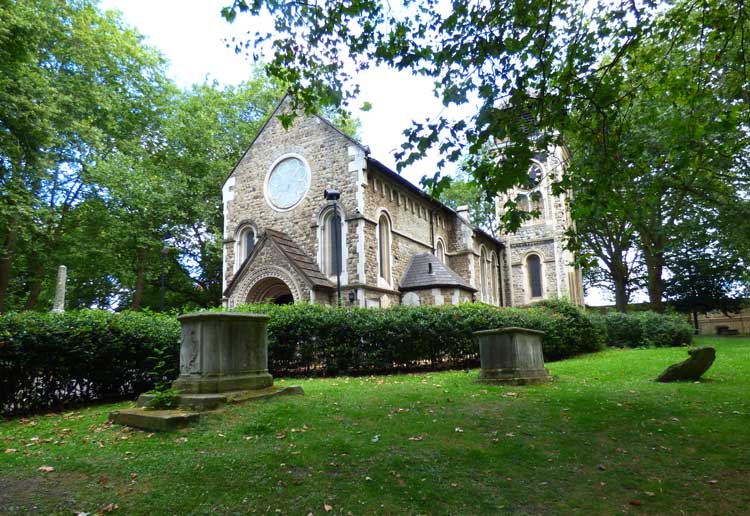
The Church Is A True Slice Of History.
It was probably around this time that the church plate, together with a unique sixth century altar stone - which some believed to have been used as an altar by St Augustine himself - disappeared, and their whereabouts would remain a mystery for over two hundred years.
Further indignity was heaped on the old place when, in 1822, a new parish church, also called St Pancras, was opened not half a mile away on the Euston Road. The old church became a Chapel of ease and, gradually, neglect and decay consumed its walls until, by the 1840s, it had been reduced to a melancholic ruin.
And then the tide began to turn. With the rapid expansion of London in the 19th century, the area that had, until then, been fields to the north of the Capital, began disappearing beneath an urban spread of asphalt, brick and concrete. People started to notice the abandoned little church, and the call went out that something really should be done to give it a new lease of life.
Thus, in 1847 a restoration project was set in motion, part of which involved the demolition of the old 13th century tower, so that it could be rebuilt in a fashion that was more akin to Victorian tastes.
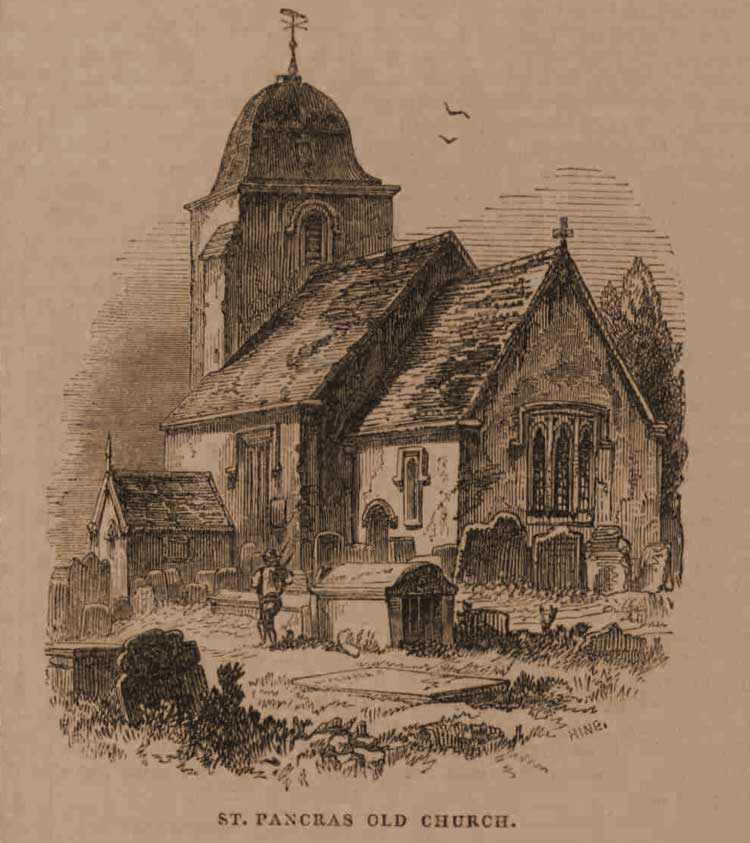
The Church Prior To Its Victorian Renovation.
As the workmen dug deep into the tower's foundations, they came across the missing silver that had, evidently, been hidden away so as to keep it out of the reach of the Cromwellian forces.
But the most remarkable part of their find was that of the old altar stone, which was returned to its rightful home, and which now adorns a place of honour embedded into the centre of the simple high altar of the church. Examination of this relic, which is truly the treasure of St Pancras Old Church, has led to the suggestion that the stone itself might well date from the late sixth to the early seventh centuries, which would, most certainly, confirm the church's reputation as a place of considerable antiquity.
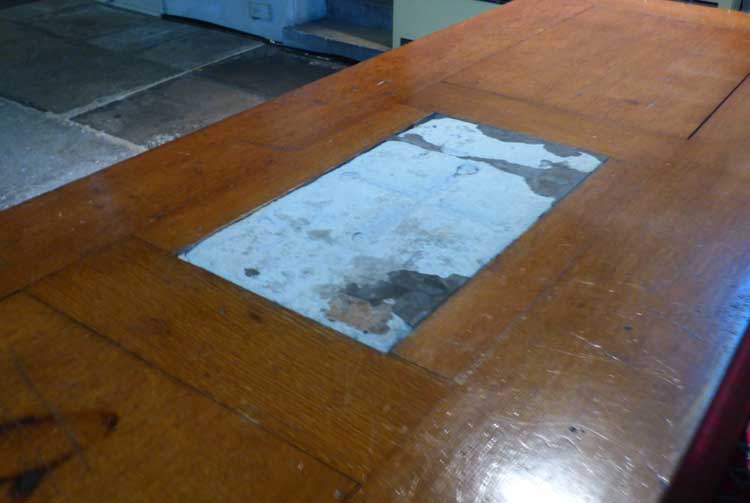
The Old Altar Stone
Since then, there have been several attempts to harm the church. The bombs of the blitz would damage its ancient fabric in the 1940's. Satanists would desecrate its interior in 1985; and St Pancras International train station would become its newest neighbour in the 2000's.
But this old church would take them all in its stride, its hallowed walls defying them to do their worst, because this place of ancient worship has seen it all before. It has faced down destruction and adversity and has emerged into the 21st century to take its place amongst the must-sees of modern London whilst, at the same time, offering a delightful respite from the hectic pace of life on the outside.
Long may it continue to do so.